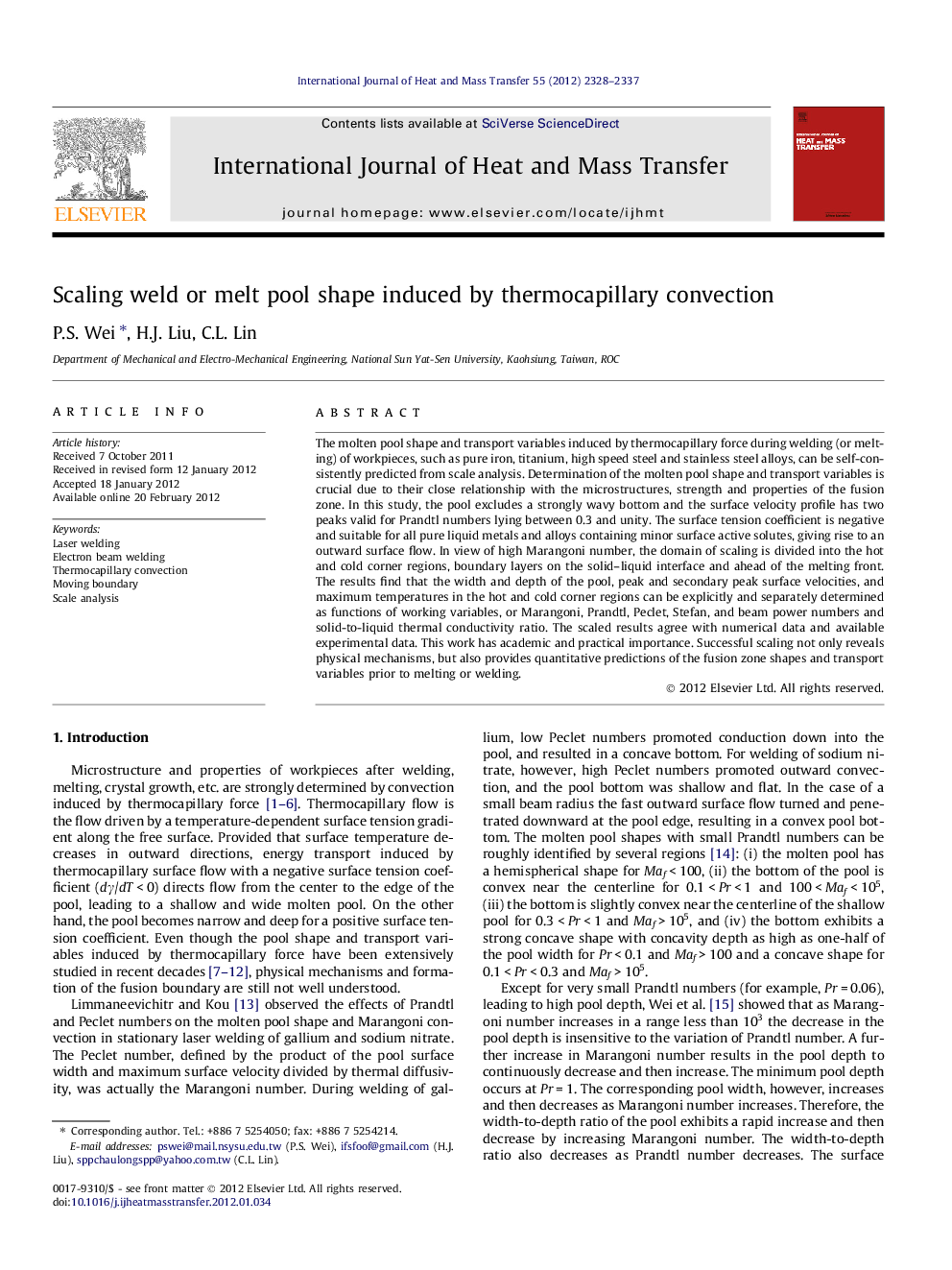| Article ID | Journal | Published Year | Pages | File Type |
|---|---|---|---|---|
| 658894 | International Journal of Heat and Mass Transfer | 2012 | 10 Pages |
The molten pool shape and transport variables induced by thermocapillary force during welding (or melting) of workpieces, such as pure iron, titanium, high speed steel and stainless steel alloys, can be self-consistently predicted from scale analysis. Determination of the molten pool shape and transport variables is crucial due to their close relationship with the microstructures, strength and properties of the fusion zone. In this study, the pool excludes a strongly wavy bottom and the surface velocity profile has two peaks valid for Prandtl numbers lying between 0.3 and unity. The surface tension coefficient is negative and suitable for all pure liquid metals and alloys containing minor surface active solutes, giving rise to an outward surface flow. In view of high Marangoni number, the domain of scaling is divided into the hot and cold corner regions, boundary layers on the solid–liquid interface and ahead of the melting front. The results find that the width and depth of the pool, peak and secondary peak surface velocities, and maximum temperatures in the hot and cold corner regions can be explicitly and separately determined as functions of working variables, or Marangoni, Prandtl, Peclet, Stefan, and beam power numbers and solid-to-liquid thermal conductivity ratio. The scaled results agree with numerical data and available experimental data. This work has academic and practical importance. Successful scaling not only reveals physical mechanisms, but also provides quantitative predictions of the fusion zone shapes and transport variables prior to melting or welding.
